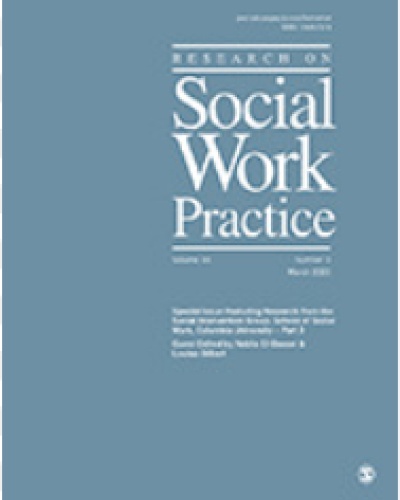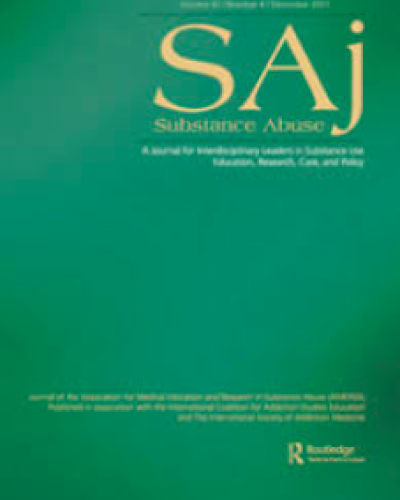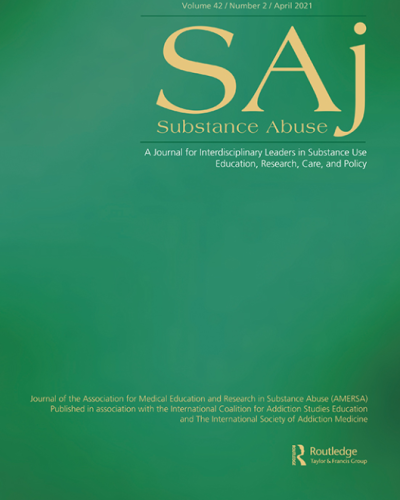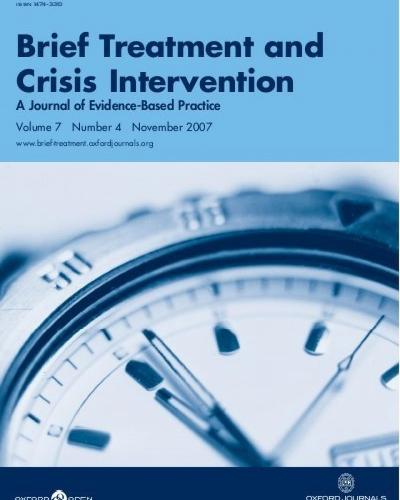
The Relationship between Lifetime Opioid Use and Mental and Physical Health among Incarcerated Individuals
Published:
| Author: Tanya Renn, John Moore, Christopher Veeh, Carrie Pettus
Relationships between opioid use and health, both physical and mental, have been discovered over the last decade or so, but these relationships have yet to be explored among incarcerated individuals. These relationships are important as they may have implications on the health of those who are incarcerated and nearing reentry, because higher rates of opioid use, as well as poor physical and mental health, are found among those who are justice-involved compared with the general population.
Category: Substance Use, Mental Health, Incarceration

Behavioral Health Interventions for Incarcerated Adults With Histories of Trauma: A Scoping Review
Published:
| Author: Melissa D. Grady, Stephen Tripodi, Lauren Herod, Michael Rudzinski
The majority of incarcerated individuals have experienced traumatic events in their lifetime, contributing to related behavioral health issues, including post-traumatic stress, mood, anxiety, and substance use disorders. The purpose of this article is to understand the existing state of the literature through a scoping review on correctional-based programs that address both trauma and behavioral health.
Category: Trauma, Mental Health, Substance Use

Behavioral health literacy: A new construct to improve outcomes among incarcerated individuals
Published:
| Author: Carrie Pettus, Stephanie Kennedy, Tanya Renn, Stephen Tripodi, Lauren Herod, Danielle Rudes, Faye Taxman
In the United States, nearly 13 million adults are incarcerated in prisons and jails annually with significant negative public health consequences. Incarcerated individuals have disproportionate rates of behavioral health disorders (BHDs); untreated BHD symptoms bring people into incarceration settings and are associated with re-arrest after release.
Category: Incarceration, Mental Health, Reentry, Substance Use

The metropolitan context of substance use and substance use disorders among US adults on probation or parole supervision
Published:
| Author: John Moore, Tanya Renn, Christopher Veeh
Rates of substance use and substance use disorders are higher among adults on probation or parole supervision compared to the general population. Substance use is a risk factor for not adhering to supervision requirements, which may result in revocation and incarceration. Examining associations of metropolitan area status with substance use and substance use disorders may identify specific substance use behaviors that can be targeted in community corrections prevention and treatment services.
Category: Substance Use, Community, Criminal Justice System

The metropolitan context of substance use and substance use disorders among US adults on probation or parole supervision
Published:
| Author: John Moore, Tanya Renn, Christopher Veeh
Study findings highlight the differences of substance use and substance use disorders between levels of metropolitan areas for those on probation or parole. Findings suggest that cocaine use should be emphasized in clinical services in large metropolitan areas, whereas methamphetamine use may be prioritized in nonmetropolitan areas.
Category: Substance Use, Probation and Parole
Examining Dose–Response Relationships Between Childhood Victimization, Depression, Symptoms of Psychosis, and Substance Misuse for Incarcerated Women
Published:
| Author: Stephanie Kennedy, Stephen Tripodi, Carrie Pettus-Davis, Jaime Ayers
The current study uses the dose–response model to examine the relationships between childhood victimization events and subsequent depression, symptoms of psychosis, and substance misuse in a sample of 230 randomly selected incarcerated women in the United States. Results on the frequency of victimization were mixed. In this sample, both frequency of physical abuse and frequency of sexual abuse significantly predicted current symptoms of psychosis, but only frequency of physical abuse significantly predicted substance misuse.
Category: Trauma, Mental Health, Substance Use

Substance Use Among Victimized Women on Probation and Parole
Published:
| Author: Seana Golder, Martin T. Hall, TK Logan, George E. Higgins, Amanda Dishon, Tanya Renn, Katherine M. Winham
Victimized women within the criminal justice system are an important group and understanding their substance use is critical. Substance use was examined among 406 victimized women on probation and parole in an urban community from 2010 to 2013. Ninety-three percent reported lifetime use of an illicit substance, while 58% and 45% reported use of at least one illicit substance in the past two years and 12 months, respectively. Among probationers, having been in a controlled environment was associated with a higher prevalence of illicit substance use as compared to parolees.
Category: Substance Use, Incarcerated Women

Histories of childhood victimization and subsequent mental health problems, substance use, and sexual victimization for a sample of incarcerated women in the US.
Published:
| Author: Stephen Tripodi, Carrie Pettus-Davis
Women are entering US prisons at nearly double the rate of men and are the fastest growing prison population. Current extant literature focuses on the prevalence of the incarceration of women, but few studies exist that emphasize the different trajectories to prison. For example, women prisoners have greater experiences of prior victimization, more reports of mental illness, and higher rates of illicit substance use.
Category: Incarcerated Women, Trauma, Mental Health, Substance Use

Substance Abuse Treatment for Juvenile Offenders: A Review of Quasi-Experimental and Experimental Research
Published:
| Author: Stephen Tripodi, Kimberly Bender
This paper presents the results of a systematic review of the research literature to assess the effectiveness of substance abuse treatment programs for alcohol and marijuana use by juvenile offenders. The literature and database search generated five experimental or quasi-experimental studies that assessed alcohol outcomes for juvenile offenders and five experimental or quasi-experimental studies that assessed marijuana outcomes for juvenile offenders. Implications for future research are discussed.
Category: Substance Use, Juvenile Offenders

Determinants of substance abuse among incarcerated adolescents: Implications for brief treatment and crisis intervention.
Published:
| Author: Stephen Tripodi, David W. Springer, Kevin Corcoran
This study assessed the determinants of substance abuse among incarcerated youth. Because substance abuse is a predictor of incarceration and conduct disorder is known to increase the chances of youth abusing substances, the purpose of this study was to determine what seminal symptoms of conduct disorder seem to be the risk factors for substance abusers among incarcerated youth.

